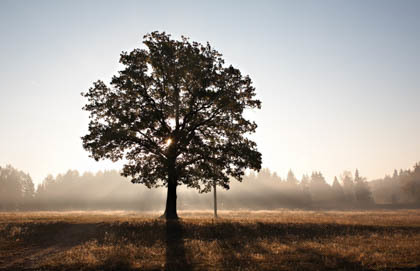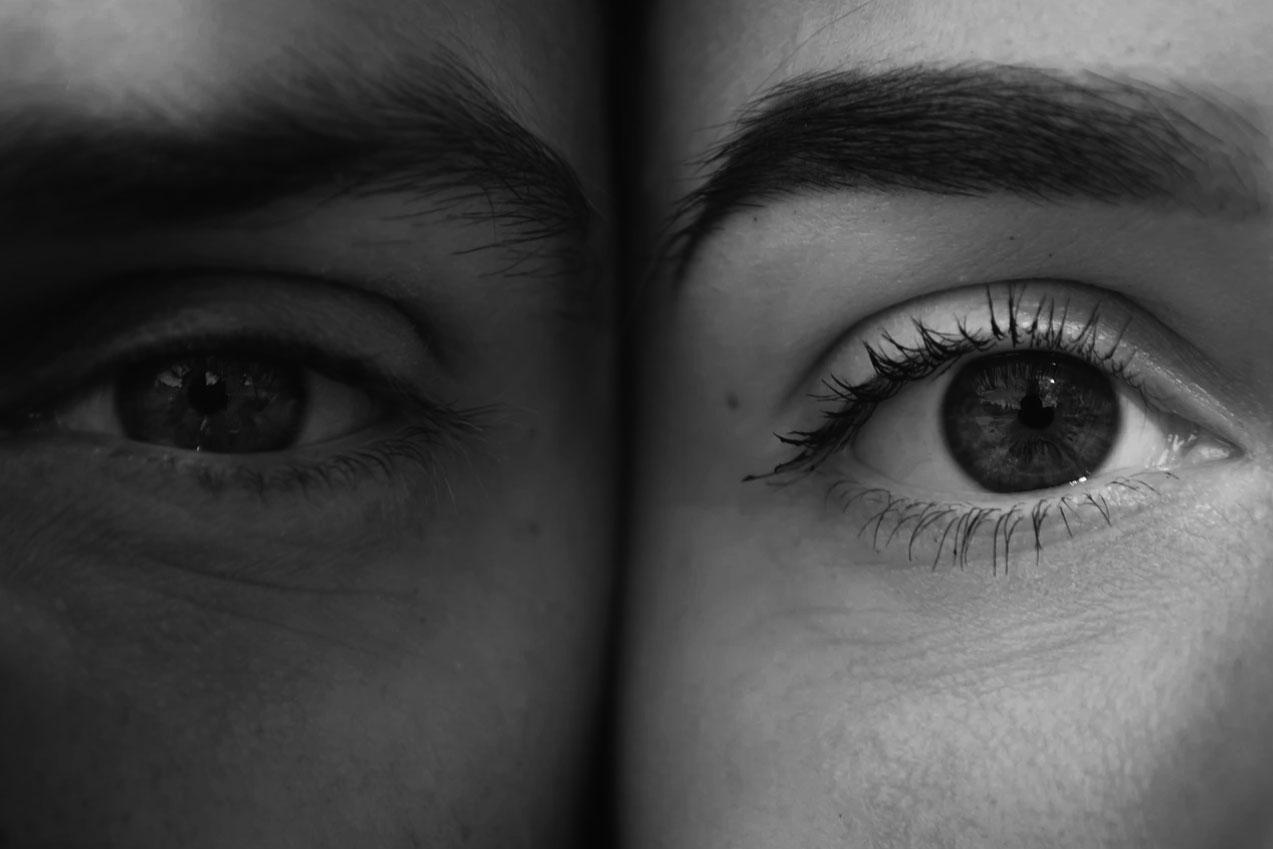Vögelin's emphasis is on how every human soul undergoes experiences of the divine. In his 1966 German work, Anamnesis (from Plato's Greek word meaning "recollection" or "remembrance"), translated into English in 1978 (now included in Volume 6 of the 2002 Collected Works of Eric Vögelin), Vögelin shows how the essential practice of philosophy consists in meditative recollections of experiences awakening the "awe" or "excitement" of existence.
In Anamnesis, Vögelin himself recalled early childhood memories in order to illustrate his expansive philosophy of consciousness by rooting it firmly in real human experiences. Similarly, in The Tree of Life, Malick uses film to communicate universal human experiences of the soul coming into contact with the divine.
Reviewers of the film have marvelled at the overwhelming power of Malick's cinematic recollections of family life, and most have considered the family drama at the centre of the film to be its greatest strength. But they have been mostly puzzled, even if sometimes dazzled, by what frames this story of a father (Brad Pitt), a mother (Jessica Chastain) and three brothers (Hunter McCracken, Laramie Eppler and Tye Sheridan) whose lives are marked by the early death of the middle brother, R.L. (Eppler).
For the most part, the movie cinematically unveils the anamnetic consciousness of the brother Jack as an adult (Sean Penn), as he engages in meditative recollection on the occasion of the anniversary of his brother's death. But more significantly the movie also frames this meditative recollection with cinematic explorations of the Beginning (of the universe and the subsequent evolution of life on earth) and of the Beyond (the transcendent divine presence that interacts with a soul as it becomes immortal and journeys to the other side of death).
I use Vögelin's preferred terms, the Beginning and the Beyond, from a lengthy unpublished version of his Aquinas lecture of that title at Marquette University in 1975 (now in Volume 28 of the Collected Works), a work that I think is required reading to fully understand the significance of how The Tree of Life both begins and ends: namely, with a cosmogonic meditation on birth (the Beginning) and a philosophical myth on the soul's transfiguration in death (the Beyond).
Whether or not Malick has read Vögelin, The Tree of Life's unique achievement is that the film is neither indebted to an identifiable ideology nor reducible to the philosophy of any one thinker. Rather, its stunning accomplishment is to root cinematic experience firmly in the basis of the real human experience of a soul in relation to the divine. That inner experience, undistorted by the later accretions of doctrine and dogma, is the uncompromising focus of both Malick's cinematic vision and Vögelin's philosophy of consciousness.
For Vögelin, doctrine or dogma can be salutary when it protects "an historically achieved state of insight against the disintegrative pressures" of cultural disorder. But Vögelin also observes that in our present age "the deforming doctrinalization" at the basis of political ideologies (communism, fascism, totalitarianism and other "isms") has perverted authentic (e.g. Christian) symbolizations of the divine. These perversions transpose authentic consciousness of a transcendent Beginning and of a transcendent Beyond into purely immanent, this-worldly concerns. This is a pattern of delusion that Vögelin has studied in detail and classified as variations on Gnosticism.
The problem we face today, according to Vögelin, is that the deluded and deformed doctrinalization "has become socially stronger than the experiential insights it was originally meant to protect." To recover the original meaning of the doctrinal symbols is thus an enormous task.
Yet Malick's film is a major contribution to what Vögelin would call the "imaginative vision" that authentically presents "the comprehensive event of experience and symbolization." This cultural achievement of "imaginative vision" is a necessary prerequisite, says Vögelin, because a meditative philosophical effort at recollection "can operate only within the [artist's culturally] comprehensive [imaginative] vision and make it self-reflectively luminous for man's existence in tension toward the Beyond."
Attempts at a new evangelization by the Catholic Church have highlighted how difficult it is to communicate true insights of the Beginning and the Beyond by using traditional symbols and doctrine. Tracey Rowland, in Ratzinger's Faith, illustrates two different papal emphases possible when tackling the problem: "While John Paul II 'plundered' such concepts as rights, modernity, feminism, liberty, equality and fraternity, his usual approach was to adopt the concept, gut it of those elements he deemed hostile to the faith, then repack it with Christian material.... With feminism he kept the concept, gave it a new anthropology, and relabelled it a 'new feminism. With human rights he again kept the concept, but tried to root it in the idea of the human person having been made in the image and likeness of God."
In contrast to John Paul II's strategy of philological taxidermy, Rowland observes how Benedict XVI is wary of "trying to transpose concepts from hostile traditions." She sums up the essential philosophical problem in the conclusion to her book:
"Philosophically, the problem is that liberal idioms that may in some sense have had Christian or Aristotelian or even Stoic memories were over several centuries taken over and mutated in what Hans Urs von Balthasar has called spoliation Christianorum (a plundering of the Christian intellectual framework). Often, by the time they emerged within the liberal tradition, they were hardly recognizable and conveyed very different meanings from their original classical—Christian 'shadows.' The question that John Paul II faced and Benedict XVI now faces is whether to pursue a strategy of trying to reclaim the language that has been plundered, despoiled, and mutated, or to find another language with which to address the world."
Vögelin, in "The Beginning and the Beyond," says that "the symbols of the past," in order to speak to our contemporaries, "must be re-examined" so that their significance "as instruments of historical interpretation" can be truly rediscovered. Vögelin argues that "we do not need an entirely new universe of symbols." Instead, we discover that the new language we need is mostly "the old language of experiential analysis that has been buried under the doctrinal deformations."
The glory of Malick's film is that it performs experiential analyses that allow one to rediscover what doctrines such as original sin are really all about. One example would be the passage of St. Paul that (Romans 7:15) Jack alludes to when, as a child, he speaks in voice-over: "What I want to do, I can't do. I do what I hate." We understand this in experiential context: his father, a frustrated musician, is forced by the current state of the natural world to take a different career path. The father transmits this pattern of domination and frustration to his sons, who in acts of vandalism and rebellion enact a natural pattern of development that is redeemed only by revelatory acts of grace.
Traditional dualisms like "nature and grace," argues Vögelin, are untenable in an era of globalization unless we can recapture in meditative reflection their experiential basis: "The dichotomies of Faith and Reason, Religion and Philosophy, Theology and Metaphysics can no longer be used as ultimate terms of reference when we have to deal with experiences of divine reality with their rich diversification."
In this regard, The Tree of Life is innovative because it shows the divine outbreak of grace within natural experiences: for example, one dinosaur gratuitously spares another or, more pertinently, the father (who seemingly symbolizes nature more than grace) and the mother (the opposite) both embrace Jack in a union more intimate than the filmic voice-over first suggests (with its invocation of the nature-grace dualism), because it is from the "one flesh" of their union that the family itself is generated—the natural union that hurtles every soul, from the Beginning, on its path to the Beyond. Every soul thus experientially encounters exterior illustrations of grace and nature as analogies for more fundamental interior movements of the soul. Vögelin points out that the symbols we inherit (e.g. original sin) "cannot rely for their personal and social acceptance on 'tradition' alone. Their truth emerges from the divine-human movements and counter-movements in the mysterious flux of divine presence that we call history."
For this reason I would see the dancing light that both begins and ends the film as a visual metaphor for the individual soul. It is also symbolized within the film by the candle lit in remembrance of a death. Those reviewers who take it to be an image of God are not entirely wrong, however, because it is indeed the flux of divine presence that bestows luminosity on the soul.
The penultimate image of the film is a bridge over water. I take this as a visual representation of Plato's Metaxy (the in between), a symbol Vögelin uses to describe how the soul dwells somewhere between the immanent, physical, external world and its transcendent, spiritual, divine origin and destination.
Such symbols (the Beginning, the in between, the Beyond) are unavoidable if we wish to stay true to the mystery. Vögelin criticizes the human "penchant to hypostatize" our experiences and to perversely darken these experiences with Gnostic dogmas:
"The experience of divine reality, it is true, occurs in the psyche of a man who is solidly rooted by his body in the external world, but the psyche itself exists in the Metaxy, in the tension toward the divine ground of being. [The soul] is the sensorium for divine reality and the site of its luminous presence."
What Vögelin writes in his magnum opus Order and History (Volume IV, The Ecumenic Age) applies also to the events recollected in The Tree of Life. "Since the events are experienced as movements of human response to a movement of divine presence, history is not a merely human but a divine-human process. Though historical events are founded in the external world and have calendar dates, they also partake of the divine lasting out of time. The historical dimension of humanity is neither world time nor eternity but the flux of presence in the Metaxy."
The shore everyone is wandering on at the film's end I take to be a liminal state, on the edge of death. Visually, it supplies a mythic representation (similar to Plato's philosophical myths) of the soul's state just before death, before its final entrance into the Beyond. The people of Jack's life "flash before his eyes" in his philosophic meditation, before he "descends" in the elevator back into everyday life, rather than ascending (like his mother) into the Beyond.
In this liminal state, we see what souls do just before they pass over to what grows from grace—the Elysian Fields (symbolized by Malick's field of sunflowers). A soul gets to perform a final act by which its natural life and its natural end in death may be sealed (or not) by an act of grace. Jack's mother here leads the way, as the cinematic myth, showing her, at the moment of death, performing her last act of grace.
Malick visually alludes to the pagan Three Graces, yet transfigures them with the mother's Trinitarian spoken Word in the voice-over. She achieves immortality in the moment of her death, a transfiguration to which we are witnesses, thanks to Jack's mythically meditative vision.
Not only Vögelin but also the great German Thomist, Josef Pieper, author of Death and Immortality and The Platonic Myths, would have no trouble recognizing the significance of Malick's imaginative vision here: namely, that artistic "remythologization" is a Praeparatio Evangelica ("preparation for the new evangelization") when it returns with care and sensitivity to the truly real human experiences.





